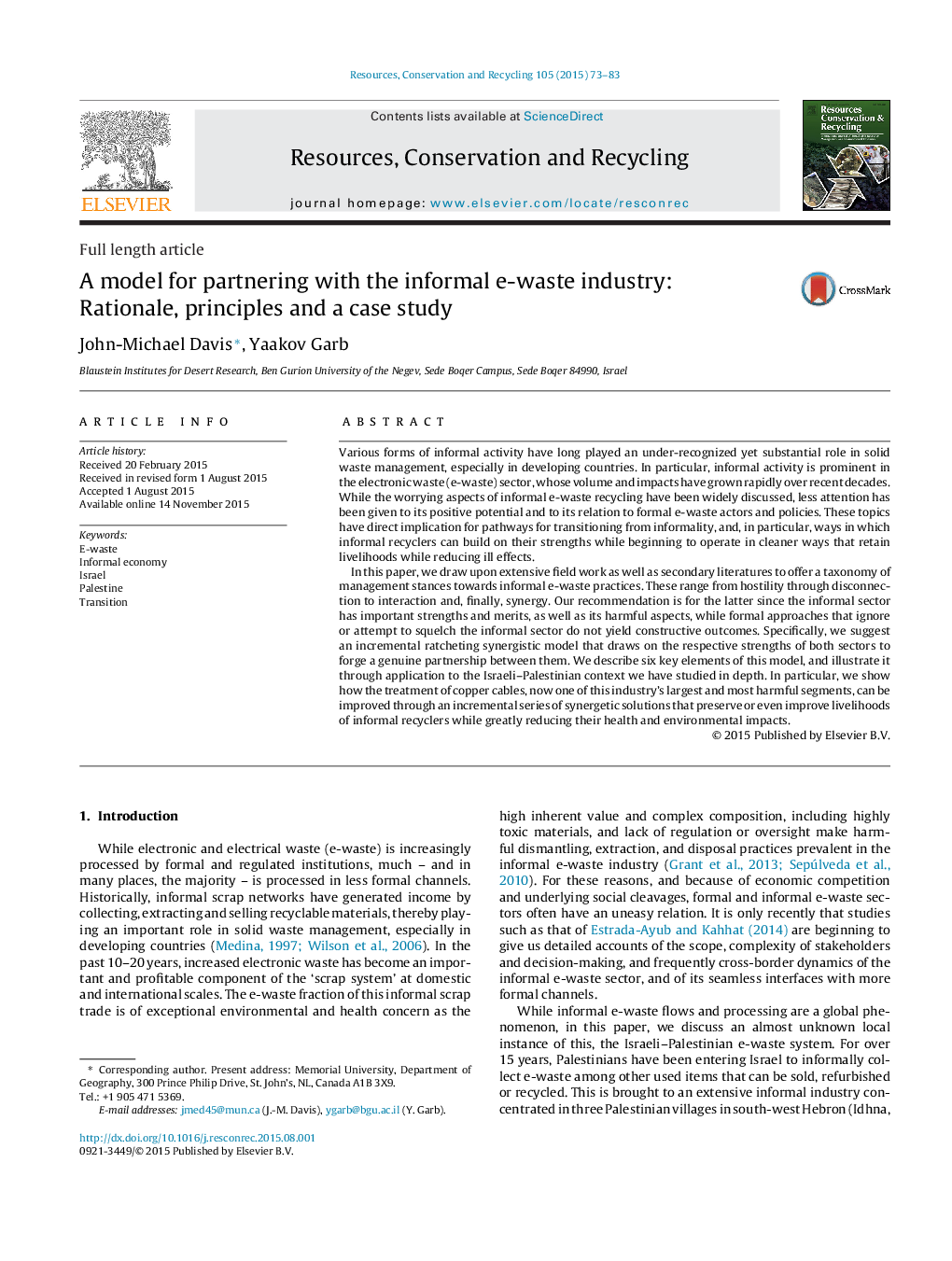| کد مقاله | کد نشریه | سال انتشار | مقاله انگلیسی | نسخه تمام متن |
|---|---|---|---|---|
| 10508052 | 948180 | 2015 | 11 صفحه PDF | دانلود رایگان |
عنوان انگلیسی مقاله ISI
A model for partnering with the informal e-waste industry: Rationale, principles and a case study
ترجمه فارسی عنوان
یک مدل برای مشارکت با صنعت غیر رسمی تجارت الکترونیک: مبانی، اصول و یک مطالعه موردی
دانلود مقاله + سفارش ترجمه
دانلود مقاله ISI انگلیسی
رایگان برای ایرانیان
کلمات کلیدی
ترجمه چکیده
در این مقاله، ما در زمینه کارهای گسترده و همچنین ادبیات ثانویه به منظور ارائه طبقه بندی مداخلات نسبت به شیوه های اتلاف غیر الکترونیکی استفاده می کنیم. این ها از خصومت از طریق قطع ارتباط با تعامل و در نهایت همکاری، دامن می زنند. توصیه ما این است که از آنجایی که بخش غیررسمی دارای نقاط قوت و ضعف و جنبه های مضر آن است، در حالی که رویکردهای رسمی که نادیده می گیرند و یا تلاش می کنند بخش غیررسمی را خنثی کنند، نتیجه های سازنده ای به دست نمی آورند. به طور خاص، ما پیشنهاد می کنیم که یک مدل هم افزایی افزایش یافته است که براساس نقاط قوت هر دو بخش به منظور ایجاد همکاری واقعی بین آنها طراحی شده است. ما شش عنصر اصلی این مدل را توصیف می کنیم و آن را از طریق کاربردی به زمینه اسرائیل-فلسطینی که در عمق آن مورد مطالعه قرار گرفته است، نشان می دهیم. به طور خاص، ما نشان می دهیم که چگونه درمان کابل های مس، که در حال حاضر یکی از بزرگترین و مضرترین بخش های این صنعت است، می تواند از طریق مجموعه ای از راه حل های هم افزایی که حفظ و یا حتی بهبود معیشت بازرسان غیر رسمی را بهبود بخشد، تا حدود زیادی کاهش می یابد. .
موضوعات مرتبط
مهندسی و علوم پایه
مهندسی انرژی
انرژی های تجدید پذیر، توسعه پایدار و محیط زیست
چکیده انگلیسی
In this paper, we draw upon extensive field work as well as secondary literatures to offer a taxonomy of management stances towards informal e-waste practices. These range from hostility through disconnection to interaction and, finally, synergy. Our recommendation is for the latter since the informal sector has important strengths and merits, as well as its harmful aspects, while formal approaches that ignore or attempt to squelch the informal sector do not yield constructive outcomes. Specifically, we suggest an incremental ratcheting synergistic model that draws on the respective strengths of both sectors to forge a genuine partnership between them. We describe six key elements of this model, and illustrate it through application to the Israeli-Palestinian context we have studied in depth. In particular, we show how the treatment of copper cables, now one of this industry's largest and most harmful segments, can be improved through an incremental series of synergetic solutions that preserve or even improve livelihoods of informal recyclers while greatly reducing their health and environmental impacts.
ناشر
Database: Elsevier - ScienceDirect (ساینس دایرکت)
Journal: Resources, Conservation and Recycling - Volume 105, Part A, December 2015, Pages 73-83
Journal: Resources, Conservation and Recycling - Volume 105, Part A, December 2015, Pages 73-83
نویسندگان
John-Michael Davis, Yaakov Garb,
